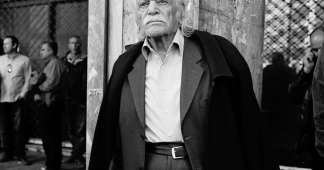17 Dec, 2017
Neighbors and passers-by reported the festive fandangles on Kalnsetas street in Saldus, western Latvia, confused at seeing the disturbing symbol displayed so openly.
But a representative of the district council told the Delfi news portal that the owner of the house has always put up decorations around Christmas-time, and this year chose the “Fire Cross”, the traditional Latvian symbol of fire. Dina Neimeta, a public and international relations official at the council, said although some may find the set-up confusing it was not breaking any laws.
A number of other Saldus residents seemed to agree. “This is not a swastika. A swastika is the other way around,” Uldis, a local janitor, told RT’s Ruptly video agency.
In fact, the Nazi swastika is the exact same way around, and even tilted at the same angle on the Third Reich’s 1933-1945 flag, and in that shape is banned in a number of European countries.
While the swastika in the general sense is a spiritual and religious symbol that has been seen for millenia across India and Asia, the particular straight-angled, tilted, right-facing form displayed in Saldus has now come to be firmly associated with Nazi Germany and the atrocities it committed.
In Latvian folk tradition, the swastika, known as the “Fire Cross” or “Thunder Cross,” is iconic of the god of thunder, light, lightning, power and happiness. As such, it is often incorporated into complex patterns used for jewelry and clothing like mittens.
In fact, the Nazi swastika is the exact same way around, and even tilted at the same angle on the Third Reich’s 1933-1945 flag, and in that shape is banned in a number of European countries.
While the swastika in the general sense is a spiritual and religious symbol that has been seen for millenia across India and Asia, the particular straight-angled, tilted, right-facing form displayed in Saldus has now come to be firmly associated with Nazi Germany and the atrocities it committed.
In Latvian folk tradition, the swastika, known as the “Fire Cross” or “Thunder Cross,” is iconic of the god of thunder, light, lightning, power and happiness. As such, it is often incorporated into complex patterns used for jewelry and clothing like mittens.
Published at https://www.rt.com/news/413433-latvian-display-not-swastika/











